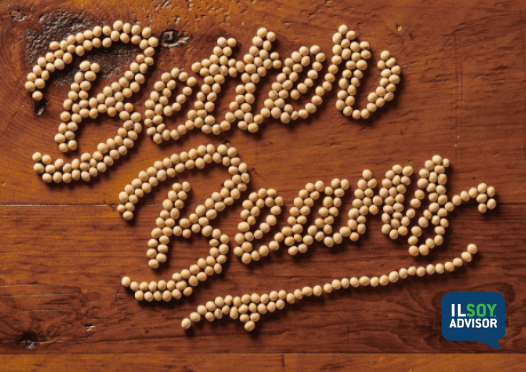We are excited to welcome you, fellow soybean farmers, back to the Soybean Summit on February 1. The Illinois Soybean Association is ready to “Checkoff Your Boxes” as we present the 2022 Soybean Summit. After a year of virtual meetings and events, this event will showcase learning for greater agronomic insights, learning opportunities, and above all, fellowship with other soybean farmers. ISA’s mission is to bring you the latest information,... Read More →
ILSOYADVISOR POST
Better Beans Series Goes West - Quincy, IL
February 15, 2019
The third Better Bean Series (BBS) event of the 2019 season was held on Wednesday, February 13, in Quincy, Illinois. The event was sponsored by the Illinois Soybean Association and soybean checkoff program, in partnership with Prairieland FS, Inc. The goal of the BBS is to “go local,” and bring soybean management information to growers where they live and farm.
The program was filled with useful information and featured expert speakers and panelists. The program included:
- Determining your high yield equation for soybeans with Dan Maggart, Agronomic Services Manager, Prairieland FS, Inc.
- Setting the foundation for yield success with Lance Tarochione, Technical Agronomist, Bayer Crop Sciences
- Keys to profitability: Resilience in 2019 and Beyond from Gary Schnitkey, Ph.D., University of Illinois at Urbana-Champaign
- Producer and expert panel moderated by Rich Archer, Agronomy Marketing Manager, Prairieland FS, Inc.
Maggart reviewed how growers must determine their own soybean higher yield equation by understanding their limitations and searching out better practices. His comments focused on the importance of regular soil testing, paying attention to soil pH and fertility, fertilizing each crop independently and planting the soybean crop earlier and in narrow rows (< 30 in.) to capture more sunlight. He encouraged attendees to visit the GROWMARK FS MiField™ website to download the latest research reports for the west central region.
Tarochione said, “Soybean yield potential begins with setting the stage for yield success.” He added that at the end of the season it was the number of pods per acre that determines final yield. However, many can end up being aborted. “Soybeans are ‘source limited’ and they can produce more pods than they can ever support. And growers must manage late season stresses in August that lead to pod abortion and yield loss.”
Tarochione explained growers need to know what factors are robbing their yield and learn to defend against them. And protecting the variety begins with the seed. Today, growers are spending more money on seed treatments than varieties cost 8- to 10-years ago and adding foliar fungicides on top of that,” he said. He lamented that all of today’s high yield practices lead to plants that stay healthier longer, and can result in a more difficult harvest.
Gary Schnitkey, Ph.D., reviewed the challenges of achieving profitability in 2019 after coming out of 2018 with high yields, fare commodity prices and MFP payments—particularly on soybeans. He said that one of the things going for Illinois growers is that their corn and soybean yields are running 6.6 bushels above the U.S. trendline. However high costs and low commodity prices will put pressure on profitability this year. For 2019 Schnitkey offered these suggestions, with the caution that every farm production is different:
- Build working capital of $300 per acre
- Forgo capital investments in 2019
- Purchase high levels of revenue-based crop insurance
- Propose cash flow based on $3.60 corn and $8.50 soybeans
- Use either 5-year average yields or crop insurance-based approved yield
- Start marketing new crop early
- Communicate with landowners about current price and expense pressures
- Consider your acre allocation for 2019 in determining farm profitability
The day ended with Rich Archer leading a very interesting panel discussion that included Dusty Morrow, agronomist with Prairieland FS, Inc., John Thomas, Pike County producer, and Darren Sims, Adams County producer. Some topics discussed include:
- Planting soybeans early and/or at the same time as corn
- Choose a full seed treatment
- Adopting a second planter
- Fertilize soybeans separate from corn
- Adopting a full fertility program, including the right micronutrients and sulfur
- Weed control begins with choosing the right trait and layering residuals
You can view all the presentations from the speakers via the links below.





Comments
Add new comment